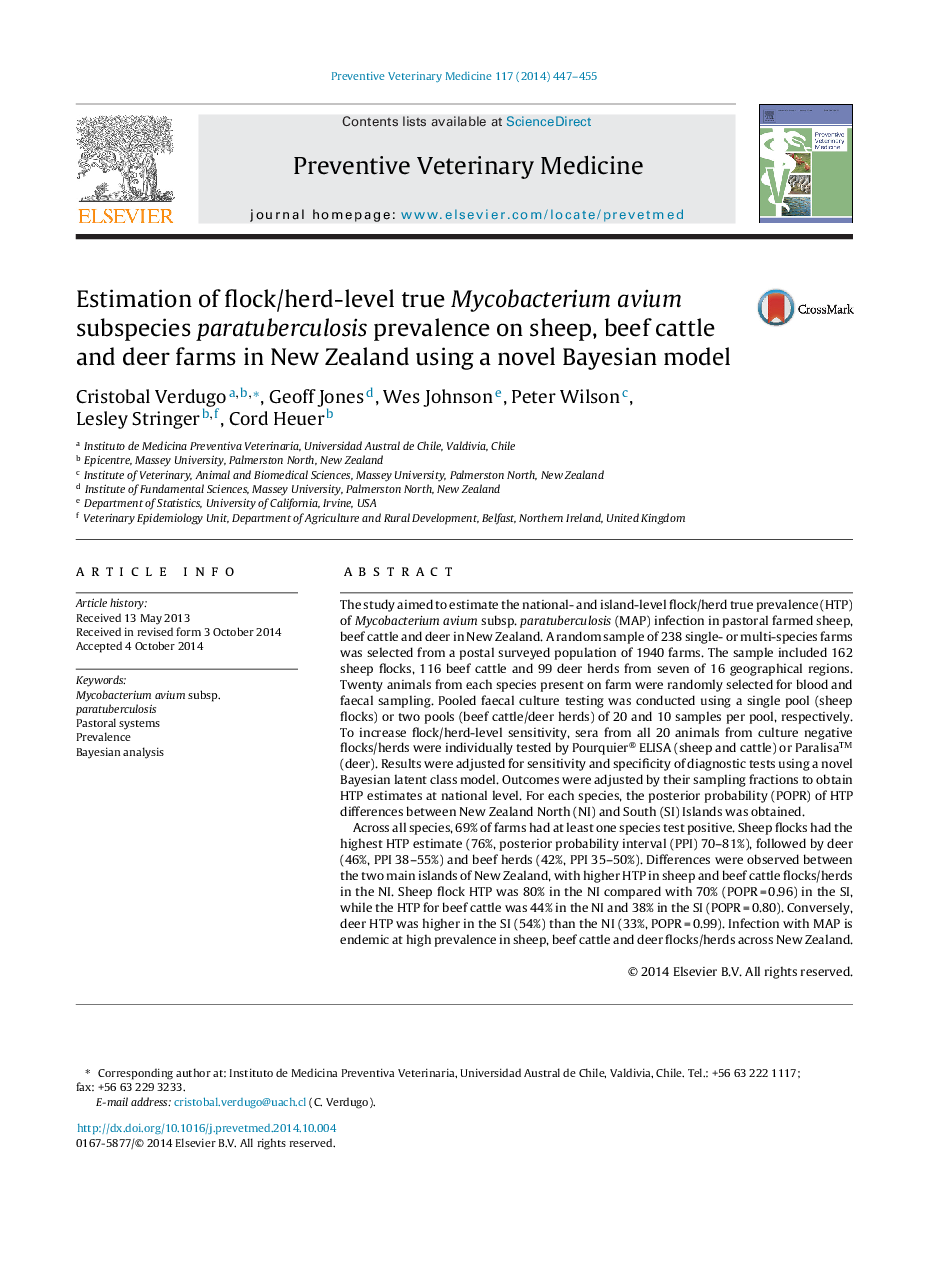| کد مقاله | کد نشریه | سال انتشار | مقاله انگلیسی | نسخه تمام متن |
|---|---|---|---|---|
| 2452507 | 1554173 | 2014 | 9 صفحه PDF | دانلود رایگان |

• MAP infection is widely spread in New Zealand with a high national herd level true prevalence (HTP).
• At national level, HTP of 76, 46 and 42% was estimated for sheep, beef cattle and deer flocks/herds, respectively.
• Sheep and beef cattle HTP estimates were higher in the North Island, while deer herds had a higher HTP in the South Island.
The study aimed to estimate the national- and island-level flock/herd true prevalence (HTP) of Mycobacterium avium subsp. paratuberculosis (MAP) infection in pastoral farmed sheep, beef cattle and deer in New Zealand. A random sample of 238 single- or multi-species farms was selected from a postal surveyed population of 1940 farms. The sample included 162 sheep flocks, 116 beef cattle and 99 deer herds from seven of 16 geographical regions. Twenty animals from each species present on farm were randomly selected for blood and faecal sampling. Pooled faecal culture testing was conducted using a single pool (sheep flocks) or two pools (beef cattle/deer herds) of 20 and 10 samples per pool, respectively. To increase flock/herd-level sensitivity, sera from all 20 animals from culture negative flocks/herds were individually tested by Pourquier® ELISA (sheep and cattle) or Paralisa™ (deer). Results were adjusted for sensitivity and specificity of diagnostic tests using a novel Bayesian latent class model. Outcomes were adjusted by their sampling fractions to obtain HTP estimates at national level. For each species, the posterior probability (POPR) of HTP differences between New Zealand North (NI) and South (SI) Islands was obtained.Across all species, 69% of farms had at least one species test positive. Sheep flocks had the highest HTP estimate (76%, posterior probability interval (PPI) 70–81%), followed by deer (46%, PPI 38–55%) and beef herds (42%, PPI 35–50%). Differences were observed between the two main islands of New Zealand, with higher HTP in sheep and beef cattle flocks/herds in the NI. Sheep flock HTP was 80% in the NI compared with 70% (POPR = 0.96) in the SI, while the HTP for beef cattle was 44% in the NI and 38% in the SI (POPR = 0.80). Conversely, deer HTP was higher in the SI (54%) than the NI (33%, POPR = 0.99). Infection with MAP is endemic at high prevalence in sheep, beef cattle and deer flocks/herds across New Zealand.
Journal: Preventive Veterinary Medicine - Volume 117, Issues 3–4, 1 December 2014, Pages 447–455